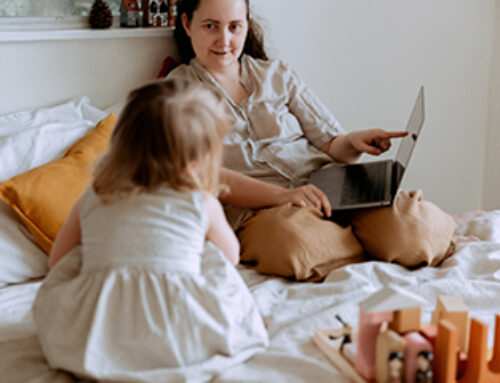We know about sight, smell, taste, hearing, and touch… but what if someone told you there’s a sixth sense? We all have this sense, but most of us are unaware of its existence. It is called proprioception and is very important to our body’s understanding of itself and how to navigate the world.
Proprioception, or the body’s ability to sense itself, can be a complicated matter, especially in children with academic, social, or behavioral issues like ADHD, Autism, and sensory processing disorder. Proprioceptive dysfunction has been observed in such children, as many of them have difficulty knowing where their body is in space and understanding boundaries when playing and interacting with other children.
Many children with processing disorders report feeling scattered or disjointed, which may be related to a faulty proprioceptive sense. Children who are clumsy, uncoordinated, and sensory seeking are often experiencing proprioceptive dysfunction. The following are common signs of proprioceptive dysfunction:
- Sensory Seeking (pushes, writes too hard, plays rough, bangs or shakes feet while sitting, chews, bites, and likes tight clothes)
- Poor Motor Planning/Control & Body Awareness (difficulty going up and downstairs, bumps into people and objects frequently, difficulty riding a bike)
- Poor Postural Control (slumps, unable to stand on one foot, needs to rest head on the desk while working)
These children often self-regulate by engaging in behaviors that provide proprioceptive input, such as toe walking, crashing, running, or flapping.

Regulating Proprioception
Heavy work, or tasks that involve heavy resistance and input to the muscles and joints, is essential to regulating proprioception. Frog jumps, bear hugs, and climbing monkey bars are just a few activities that can make a child’s proprioceptive sense stronger. Other activities include:
- Weightbearing activities e.g. crawling, push-ups
- Resistance activities e.g. pushing/pulling
- Heavy lifting e.g. carrying books
- Cardiovascular activities e.g.running, jumping on a trampoline
- Oral activities e.g. chewing, blowing bubbles
- Deep pressure e.g. tight hugs
- Wiping benches and tables
- Brushing/mopping floors
- Holding doors open
- Carrying piles of books
- Carrying a backpack with a heavy item in it
- Stacking chairs
- Moving furniture
- Putting out and tidying away toys
Providing proprioceptive activities can enhance a child’s learning in the classroom and at home. These activities will help a child to achieve a calm and alert state, which then improves emotional wellbeing and the ability to engage and learn. It should be noted, however, that some children may be overresponsive to proprioceptive input and will, therefore, avoid some of the activities listed above. It is important to find alternative calming strategies for these children. If you have any questions or concerns, talk to your Blue Bird Day therapists today.

Blue Bird Day fosters socialization, sensory regulation, and pre-academic learning in children ages 2-7 years in therapeutic rotations that simulate preschool and kindergarten settings. Our compassionate therapists practice a relationship-based and family-centered approach, provide parent training, and collaborate on goals and individualized intensive treatment plans for your child.
We believe in a collaborative and multi-disciplinary team approach to therapy. A team of occupational therapists, speech-language pathologists, dietitians, developmental therapists, behavioral therapists, physical therapists, and therapeutic assistants are created for each child to ensure child and family are fully supported and the best possible results are achieved.
Options for individualized, group and virtual therapy sessions are available as well.
Want to learn more or you have a specific question? Feel free to connect with us here!



